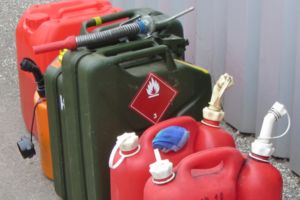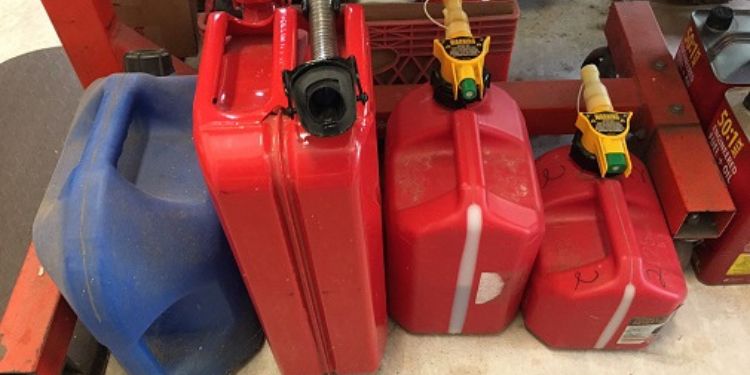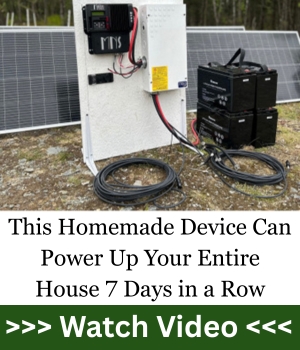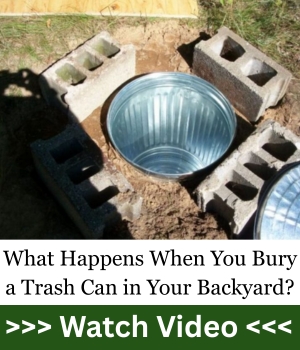Making sure you have fuel (gasoline, diesel, kerosene, propane, etc) stored safely as part of your preparations for a long-term disaster is vital.
But fuel can also be a major expense, which is one reason why most people avoid storing large quantities of it.
Another reason is that many people also believe that making the preparations to store their fuels over the long term will be an even larger expense.
In reality, storing fuels is much cheaper and easier than you may have suspected.
Buying the fuel itself may not be cheap in this day and age, but storing that fuel inexpensively and in a way that is also safe is easily doable.
Here are cheap and safe methods for storing fuels:
Store The Fuels In Approved Plastic Containers
 Both the simplest and cheapest way to store fuels is in approved plastic containers.
Both the simplest and cheapest way to store fuels is in approved plastic containers.
You can find these containers at most general or sporting goods stores.
Plastic containers should be less expensive than metal containers as well.
Do a bit of research and you should be able to find fuel containers at garage sales or on eBay where you can buy them for even less money.
Related: 18 Vintage Homesteading Tools to Search for at Garage Sales
Always store fuels in containers that are approved for the specific fuel you are storing. They will be color coded as follows:
- Blue: Kerosene
- Green: Mixed Fuels (such as gasoline and oil together for lawn equipment)
- Red: Gasoline
- Yellow: Diesel
Remember to never fill fuel all the way up to the top of the container. Fuel will expand when it gets hot, so always make sure you leave a bit of room.
So now that you have your plastic containers collected and your fuel stored in them, the next question becomes: where do you store your containers?
Store In An Existing Garage Or Shed
 You may think that you have to build an entirely new (and expensive) structure just to safely house your fuels. Nothing could be further than the truth.
You may think that you have to build an entirely new (and expensive) structure just to safely house your fuels. Nothing could be further than the truth.
Always try to store your fuels inside rather than outside. The structure you store your fuels should meet the following criteria:
- Well-ventilated
- Cool and shaded
- Away from heat or electricity sources
A shed or garage that is detached from your house and is shaded by overarching trees or brush is the best location.
The next best location will be the garage attached to your house, provided again that the above qualifications are met.
Just remember to never store fuels inside your house. If the fumes end up leaking it will be dangerous in your home where they can’t escape.
Store Outdoors Under Tarps
What do you do if you don’t have a garage or shed that meets the above qualifications?
Simple: store the fuel outside. Just make sure you do so in an area that is perpetually shaded and then cover the containers with tarps or plastic sheeting.
If you don’t already have tarps or sheeting that you can use, you can buy them inexpensively.
Use Fuel Stabilizers
 Always use fuel stabilizers if you’re going to be storing fuel over the long term.
Always use fuel stabilizers if you’re going to be storing fuel over the long term.
A container of fuel stabilizer can usually be purchased without spending an arm and a leg.
Fuel stabilizers are usually made from petroleum-based products.
They work to provide a protective layer for the fuel that sits inside the container. This is done to prevent the fuels from evaporating or to form a sticky residue.
Related: What’s the Best Fuel to Stockpile for Survival?
Gasoline and diesel in particular have a short shelf life. Gasoline will begin to degrade within one month and become bad after about six months, while diesel will start to degrade after a year.
By adding fuel stabilizer to gasoline or diesel, you can extend its shelf life to several years provided the aforementioned storage methods are met as well.
As a general rule, you’ll need a couple ounces of stabilizer for every five gallons of gasoline or diesel.
Use An Old Freezer To Store the Fuel Containers
This is a little known trick that you can use to safely store your fuels if you have an old freezer (and a shovel) lying around.
If you have an old freezer, don’t throw it away. Instead, get more value out of it by repurposing it for fuel storage.
First, choose a shady location where you could bury the freezer just under ground.
Then drill two holes (on either end of the freezer) that can accommodate vent pipes approximately two inches in diameter. Place one pipe at one end and the other at the other end. Add screening to the vents if you can to prevent rodents from getting in.
Then take a shovel and dig a hole for the freezer. Place the freezer into the hole, and then place your gasoline containers into the freezer.
Proceed to cover the freezer with dirt, and then you can cover the vent pipes with foliage to camouflage it.
This method will almost eliminate the risk of the fuels becoming a fire hazard, and it will also ensure that everything is kept hidden. This is why this method can be beneficial at a survival cache or bug out location in particular.
This may be a multi-person job to successfully lift and lower the freezer into the hole, but it can make for a good Saturday afternoon project when you have the time.
To summarize:
- Store your fuels in approved plastic containers.
- Buy additives to extend the fuels’ shelf life.
- Store your containers in a garage that meets the storage requirements we discussed.
- Alternatively, store your containers in a shaded outdoor area under tarps.
Each of the above can be done without spending a fortune.
At the end of the day, you’re going to have to budget money to purchase and then properly store your fuels as part of your preparation. It just doesn’t have to be as expensive of an endeavor as you may have thought.
You may also like:
 Best U.S. States To Forage For Food
Best U.S. States To Forage For Food
This Homemade Device Can Power Up Your Entire House 7 Days in a Row (Video)
5 Vehicles That Can Handle An EMP Attack















this was a good informative article. i keep 6 5gal. jugs of gas in the shed and have used 1 year old gas with no problems with it. at a yard sale i found a galvanized propane cage that holds 16 20lb tanks. i only have 10 tanks but would like to get more. the generayor is duel-powered. keep up the good articles, thats why i read this cite.
A past article here said something about gas lasts for about 6 months. If we use a fuel stabilizer that extends it to another 6 months.
Would that depend on the octane rating of the gas, low, medium, premium grade?
Does it make a difference storing gas in plastic or metal containers?
Gasoline treated with stabil can last 2 years. I think regular dosage equals 1 year, but doubling up on the stabil extends to 2 years.
Metal is MUCH better than Plastic for long term Fuel Storage! Plastic will leech causing the fuel to go bad faster!
I have also had plastic containers split on the seam of the handle and cause spillage and quicker evaporation. I ONLY use plastic for very short term. I also use premium no ethanol fuel for small engine use such as lawn mowers, weed eaters and chainsaws. The ethanol attacks the plastic fuel lines and fuel pick up lines in small engines. Using better fuel saves in rebuild kits and much longer times between tuneups. Also seem to get more performance out of the better fuel.
@Willie: Yes, metal cans may be better, however, unless you are rich as politicians, they set you back, for ONE, just shy of $100 bucks for only one can. I can’t afford that!
before you go crazy with the fuel storage – check your homeowner’s insurance policy and while at it – see how local GOV ordinances you’ll be breaking by storing fuel in bulk ….
and – while this article concentrates on the container fuels – propane is another fuel not to be ignored – unlike the other fuels needing to be treated to last more than a year – propane is a “forever” fuel – just keep the steel tank from rusting away ….
in regard to storing any of the containered fuels – keeping them stored elsewhere than any of your structured buildings – and secreting them away from being seen & looted >>> buried is one solution – another is to use something like the plastic kid’s playhouses you see in people’s backyards – fasten together all the various pieces into a solid plastic form – construct a wooden pallet to size – playhouse lifts on & off for access ….
Who cares
Like the article advised, don’t store inside a dwelling. There was a lady who died a few years ago because she knocked over a gas can in the car she was sleeping in and was overcome by the gas fumes. She was trying to catch a nap in between working 2 jobs. Sad.
key is Controlled Temp
Fuel Rotation
knowing the right additives and what they do
knowing the difference in octane and diesels
Jp 4 verse kerosene
do your homework
Rotation is key
dont forget that the seals fail naturally so watch the engines
make sure you cover , run , clean regularly
METAL gas cans are better than plastic. I have a bulkhead. I store them on the bottom stair in the winter, just outside my basement door.
They are Outside, in a cement framing, with a metal cover, and not as cold below ground by six feet. I do use stabilizer, too.
The only stabilizer I is Pri G for gas and Pri D for diesel. I treat right a purchase. This treatment lasts for 1 year, retreat after the year for another year. They guarantee the fuel will last for 3 years. I don’t usually treat the diesel as I use it up often. Doing this with gas, I’ve never had any gas go bad. I usually rotate the gas between 3 and 4 years. I think I have posted this before, but there may be new readers.
another secondary thought about storing fuel – in particular gasoline acquired at the local gas stations >>> in the Frigid North we get seasonal modified gas – “winter blend” for the most part which is supposedly an assist with the modern vehicles to carborate eazier ….
always a good idea to begin working thru any winter blend stored fuels when the weather begins to warm – tends to cause problems in the heat …..
Is there any truth in what I’ve heard about water in gas? I am told that the water settles to the bottom and the gas stays on top. Also I’ve been told that there are filters in certain funnels that are so fine only the gas can pass through, is that true?
https://mrfunnel.com/Mr._Funnel/Home.html
http://www.milesstair.com/Mr.Funnel.html
for more DIY – a good quality chamois cloth will absorb the water in a gas/water mix – leather or a hide will absorb to a certain degree …..
https://tannersselect.com/using-a-chamois-for-fuel-fitration.html
I am in Arizona. Temps are now running in the mid- to upper 110s. Is any additional precaution necessary to store gasoline in these high temps?
I have been storing gasoline for long term starting about 25 years ago. I have always used plastic containers without a problem to the containers. I have had the flex nozzles eventually crack and had to order new and replace them. I only use non ethanol gasoline. I always double my fuel stabilizer. I get 2 years without any problems. You can possibly come back after 1 year and add more stabilizer. I always put my stabilizer in first before the gasoline. Then shake the gasoline can after filling with gas. I also shake the can before pouring it into what ever I am fueling up. I also keep my gas cans sitting up off of the floor . Yes they are stored out of sunlight out of the weather. Never had a problem with anything fueled up with that gasoline in 25 years. I presume metal gas cans are probably better. Yet way more expensive. Yet I have had no plastic cans fail either.
Gasoline, Diesel and Kerosene store much better when PRI-G is used for gasoline and PRI-D is used for diesel and kerosene. One treatment can last for up to 4 full years in any of the above fuels.
You have to find an Independent Dealer since it is not sold in big box stores and Auto Parts stores. The exception if if there is a Camping World near by, they do carry PRI-G and PRI-D. It can be purchased from Amazon and from many small engine or marine engine repair shops.
Besides lasting much longer on a treatment, because it is a “preservative” and not a “stabilizer”, the cost of PRI is less than the cost of an amount of the usual stabilizers sold at big box stores and Auto Parts stores required to treat the same amount of fuel. It is typical to get a 16 ounce container of either PRI-G or PRI-D that treats 256 gallons for $25.00 to $30.00. A quart container of either that treats 512 gallons of fuel is usually in the $40.00-$45.00 range. It will keep for years if the product is not stored in sunlight. Heat and cold does not effect PRI-G or PRI-D.
I have taken leaded fuel from a long term storage vehicle in our shed. The petrol was over 20 years old. It smelled a bit but ran vehicles without a hitch. Diesel is a light oil and can be stored o
in cool dry conditions for decades. Do not believe all government propaganda.
∆Jackson made a good point on storing the cans off of the floor or ground. They will get condensation build up in the tank unless the tank is very full. You should always leave a headspace in the tank for expansion due to temperature change.